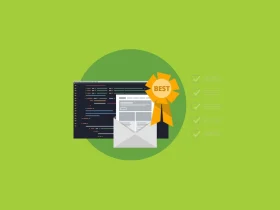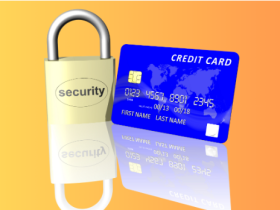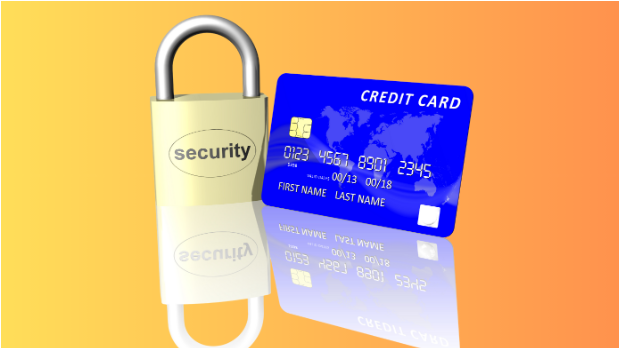Your credit card information is being hunted by cybercriminals every second through email attacks. Email-based fraud has skyrocketed 220% in recent years, making your inbox a dangerous gateway for financial theft. One compromised email can drain your accounts within hours.
This guide reveals three critical defense strategies that financial security experts use to protect millions in credit card assets. You’ll discover how to identify sophisticated phishing schemes that fool even tech-savvy users.
Find out the advanced password protocols that create impenetrable barriers around your financial communications. Most importantly, you’ll master the enterprise-level monitoring techniques that detect threats before they strike. Don’t let your financial security depend on luck.
Recognizing Email-Based Credit Card Threats
Email remains one of the most common attack vectors for credit card theft, with criminals using sophisticated techniques to trick victims into revealing sensitive information.
Phishing emails often impersonate legitimate financial institutions, creating convincing replicas of bank communications. These fraudulent messages typically request urgent action, such as verifying account details or updating payment information.
Business Email Compromise (BEC) attacks target organizations by infiltrating employee email accounts. Criminals then request fraudulent wire transfers or credit card payments from unsuspecting colleagues or clients. These attacks appear legitimate because they originate from trusted email addresses.
Malware attachments in emails can install keyloggers that record credit card information as you type. These programs run silently in the background, capturing every keystroke including passwords, card numbers, and security codes.
Social engineering tactics manipulate victims through emotional triggers like urgency, fear, or curiosity. Scammers create scenarios requiring immediate credit card verification to avoid account closure or unauthorized charges. Protect yourself by implementing robust email security measures and maintaining constant vigilance against these evolving threats.
Essential Email Security Protocols
Implementing comprehensive security protocols creates multiple layers of protection against credit card theft through email communications. Multi-factor authentication (MFA) adds an extra security layer beyond forgotten password.
Even when criminals obtain login credentials, MFA prevents unauthorized access to email accounts containing financial information. Enable MFA on all email accounts, especially those used for banking or shopping communications.
Email encryption protects message content during transmission and storage. End-to-end encryption ensures only intended recipients can read sensitive information. Use email providers that offer built-in encryption or install encryption software for additional protection.
Secure email gateways filter incoming messages for malicious content before reaching your inbox. These systems detect phishing attempts, malware attachments, and suspicious links that could compromise credit card security.
Many email providers include basic filtering, but premium credit card mail security solutions offer enhanced protection. Regular software updates patch security vulnerabilities that criminals exploit to access email accounts.
Enable automatic updates for email clients, operating systems, and security software to maintain current protection levels. Strong password management using tools like strongpasswordgenerator.org helps create unique, complex passwords for each email account.
Advanced Password Protection Strategies
Password security forms the foundation of email protection, directly impacting your credit card safety and financial security. Complex password creation involves combining uppercase letters, lowercase letters, numbers, and special characters in unpredictable patterns.
Avoid personal information like birthdays, names, or common words that criminals can guess using automated tools. Unique passwords for each account prevent credential stuffing attacks where criminals use stolen passwords across multiple platforms.
If one account becomes compromised, unique passwords protect your other financial accounts from unauthorized access. Password managers generate, store, and automatically fill complex passwords for all accounts.
These tools eliminate the need to remember multiple passwords while ensuring each account has maximum protection. Many password managers also monitor for data breaches affecting your accounts.
Regular password updates refresh security credentials before potential compromises occur. Change passwords every 90 days for high-value accounts like email addresses used for banking communications. Two-factor authentication backup codes provide account access when primary authentication methods fail.
Store these codes securely offline to maintain access during emergencies while preventing unauthorized account recovery. Services like strongpasswordgenerator.org offer reliable tools for creating robust passwords that protect against brute force attacks and dictionary-based password cracking attempts.
Email Communication Best Practices
Safe email habits significantly reduce exposure to credit card theft and financial fraud attempts. Verify sender authenticity before responding to financial requests or clicking links. Contact organizations directly using official phone numbers or websites rather than responding to unexpected emails requesting credit card information.
Avoid public Wi-Fi for financial emails because unsecured networks allow criminals to intercept communications containing sensitive data. Use cellular data or trusted private networks when accessing banking emails or making online purchases.
Never include complete credit card numbers in email messages, even when communicating with legitimate merchants. Use partial numbers or reference numbers instead of full payment card details. Regular email account monitoring helps detect unauthorized access attempts or suspicious activity.
Review login histories, sent messages, and account settings for signs of compromise. Secure email deletion ensures that removed messages cannot be recovered by criminals who gain system access. Use permanent deletion features and empty trash folders regularly to eliminate financial information traces.
Email forwarding restrictions prevent automatic forwarding of sensitive financial communications to potentially unsecured accounts. Disable forwarding rules that could redirect credit card statements or banking notifications.
Implementing Corporate Email Security
Businesses face heightened risks from email-based credit card theft, requiring comprehensive security frameworks and employee training programs. Employee security training educates staff about phishing recognition, social engineering tactics, and proper email handling procedures.
Email filtering systems automatically quarantine suspicious messages before reaching employee inboxes. Advanced filters analyze message content, sender reputation, and attachment types to identify potential threats.
Data loss prevention (DLP) tools monitor outgoing emails for credit card numbers, preventing accidental transmission of sensitive payment information. These systems can block, encrypt, or redirect messages containing financial data.
Incident response procedures establish clear protocols for handling suspected email security breaches. Quick response times minimize damage when credit card information becomes compromised through email attacks.
Vendor email security assessments evaluate third-party partners’ email protection capabilities before sharing financial information. Require partners to maintain specific security standards for handling credit card data.
Monitoring and Response Strategies
Proactive monitoring and rapid response capabilities minimize damage when email security incidents occur. Real-time monitoring systems track email traffic for suspicious patterns indicating potential credit card theft attempts. Automated alerts notify administrators about unusual activities requiring immediate investigation.
Account activity surveillance involves regularly reviewing credit card statements and banking communications for unauthorized transactions. Early detection enables faster response and reduces financial losses.
Incident documentation creates detailed records of security events for analysis and prevention planning. Maintain logs of phishing attempts, suspicious emails, and security breaches affecting financial communications.
Recovery procedures outline steps for restoring email security after compromises occur. Include contact information for credit card companies, banks, and law enforcement agencies in emergency response plans.
Security audit schedules ensure regular assessment of email protection effectiveness. Quarterly reviews identify vulnerabilities and update security measures based on emerging threats.
Communication protocols establish clear procedures for notifying relevant parties about email security incidents affecting credit card data. Include customers, partners, and regulatory authorities in notification frameworks.
Frequently Asked Questions
How can I tell if my email has been compromised for credit card theft?
Watch for unexpected password reset notifications, unfamiliar sent messages, unusual account activity, or unauthorized credit card charges. Check login histories regularly and monitor credit reports for suspicious activities that could indicate email-based identity theft.
What should I do if I receive a suspicious email requesting credit card information?
Never click links or download attachments from suspicious emails. Forward the message to the organization’s official fraud department, delete the email permanently, and contact your credit card company if you’ve already provided any information.
Protecting Your Financial Future Through Email Security
Credit card email security requires constant vigilance and proactive protection measures in today’s digital landscape. The strategies outlined in this guide provide comprehensive defense against evolving cyber threats targeting your financial information through email communications.
Remember that cybercriminals continuously develop new techniques to bypass security measures. Stay informed about emerging threats, regularly update your protection strategies, and maintain healthy skepticism toward unexpected financial communications.
Your commitment to email security directly impacts your financial well-being and personal privacy. Implement these proven techniques consistently, and you’ll significantly reduce your risk of becoming a victim of email-based credit card theft while maintaining secure digital communications.







































Leave a Reply